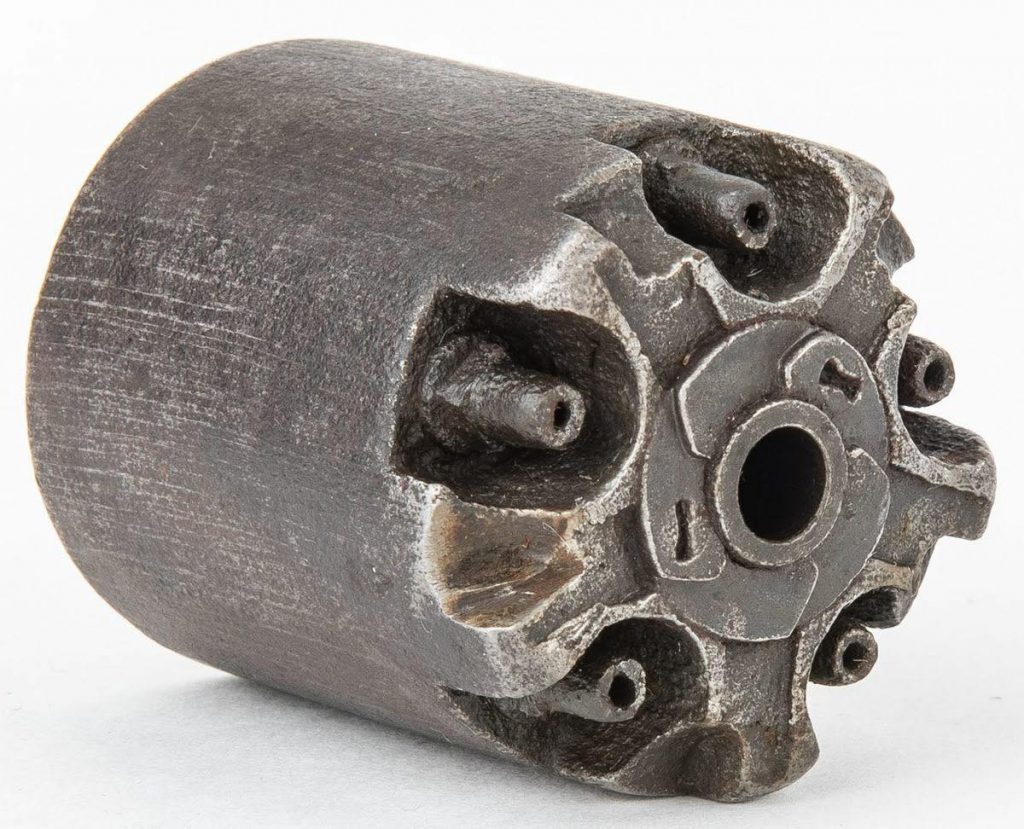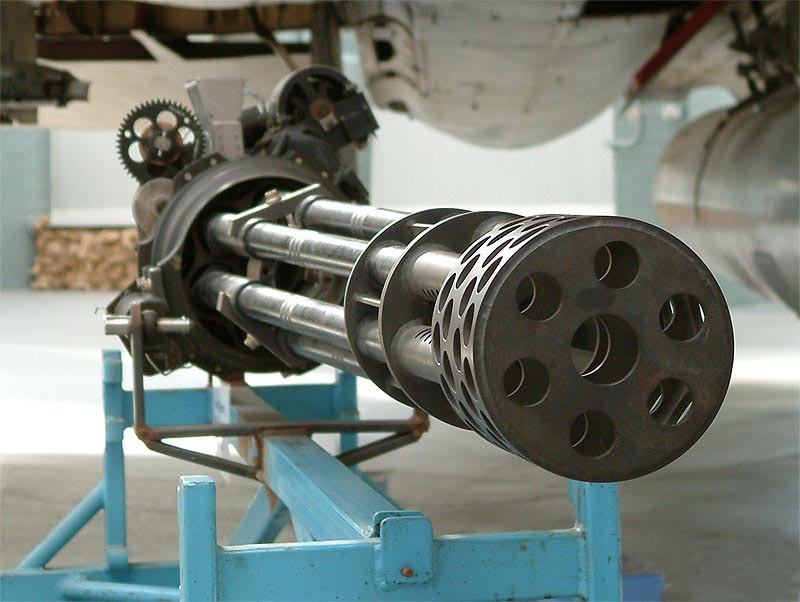A Metal Cylinder That Changed the Sound of War
Have you ever wondered why the roar of a minigun or Gatling-style cannon is so unforgettable? It isn’t a single barrel doing all the work — it’s a compact block of rotating barrels working together as a system. That unassuming cylinder you see in photos is the barrel cluster: the heart of rotary cannons that turned silence into thunder and redefined high-rate-of-fire weaponry.
What Exactly Is a Barrel Cluster?
At first glance it’s just a chunk of metal with holes — but it’s a cleverly engineered assembly. A barrel cluster is a grouping of multiple gun barrels (commonly six) mounted symmetrically around a central axis. As the whole assembly spins, each barrel cycles through feeding, firing, and ejecting phases in sequence. The result: the weapon can sustain extremely high rates of fire without overheating a single tube. Think of it like multiple people taking turns blowing out a candle instead of one person doing it over and over — the work is shared, and nothing burns out.

Why the Sound Sticks in Your Head
That unforgettable staccato — rapid, machine-like, somehow alive — comes from the rapid succession of rounds launched from rotating barrels. Each barrel fires a fraction of a second after the previous one, producing a continuous, pulsed roar. When mounted on fast aircraft or helicopters, the sound takes on even more menace, mixed with engine noise and Doppler shifts. That auditory signature became synonymous with overwhelming firepower in modern combat.
A Brief History: From Hand-Crank to Electrified Fury
The barrel-cluster concept goes back to the multi-barrel Gatling guns of the 19th century, inventions aimed at increasing sustained fire without single-barrel overheating. Modern rotary cannons evolved that idea into electrically or hydraulically driven mechanisms capable of thousands of rounds per minute. These advances enabled new roles: close air support, vehicle suppression, and airborne defensive systems — places where a high, controllable volume of fire matters more than pinpoint range.
Video : Rotary cannon
How It Works — Without the Dangerous Details
You don’t need a degree to grasp the idea: the cluster spins; barrels rotate into a feed position one after another; rounds are chambered and fired; spent casings are expelled. Because each barrel only fires intermittently, thermal stress is distributed. That mechanical choreography allows for continuous high-rate firing that would otherwise melt or deform a lone barrel. I won’t walk through step-by-step assembly or materials recipes — those would cross into risky territory — but the principle is elegantly simple and brutally effective.
Common Platforms and Famous Names
If you’ve heard the names M61 Vulcan, GAU-8/A Avenger, or M134 Minigun, you’ve already met systems that rely on barrel clusters. The M61 Vulcan is a staple on many fighter jets for air-to-air and limited air-to-ground engagement. The GAU-8/A — the A-10’s iconic throat-rattling nose cannon — uses a similar multi-barrel approach scaled for massive 30 mm rounds. The M134 Minigun is the familiar, fast-chattering 7.62 mm system often seen on helicopters and light armored vehicles. Each system adapts the barrel-cluster concept to different calibers, roles, and mounting constraints.

Design Trade-Offs: Power, Weight, and Control
Barrel clusters solve one problem — sustained fire — and introduce others. Adding multiple barrels means more mass and rotational inertia, so designers balance rate-of-fire against weight, power draw, and the platform’s structural limits. Mounting a rotary cannon on an airframe or vehicle also requires dealing with recoil management, ammunition storage, and reliable feeding mechanisms. Think of it as designing a high-performance engine: power is great, but you still need brakes, suspension, and fuel.
Applications Beyond the Battlefield
While military use is primary, the engineering lessons from barrel clusters influence high-speed, high-durability rotating machinery in other fields. Concepts like load sharing, rotational cooling, and redundancy are valuable wherever continuous high-throughput operation is needed. That said, the barrel cluster’s most visible legacy remains in defense and aviation — places where a short, intense burst of fire can be decisive.
Why the Barrel Cluster Still Matters Today
Modern conflicts demand versatility. A rotary cannon with a barrel cluster can switch from suppressive fire to precision strafing depending on targeting systems and munitions. The basic architecture — multiple barrels sharing the workload to allow high sustained rates — remains relevant as sensors, fire-control systems, and platform integration continue to improve. In short: the concept endures because it works.
Video : Top 7 Deadliest Rotary Cannons You’ve Probably Never Seen
Common Misconceptions Cleared Up
Is a barrel cluster a “super-barrel” you can just rev up and shoot forever? No. It’s an engineered compromise that balances heat, wear, and rate of fire. Does the metal block itself do the firing? Not by magic — it’s part of a larger weapon system that includes feed mechanisms, power drives, and fire-control electronics. Finally, no, the imagery doesn’t make the system invincible; it’s a tool with strengths and limitations that operators and engineers must respect.
A Cultural Footprint: Sound, Symbol, and Story
Beyond mechanics, the barrel cluster has a cultural presence. Its sound has been used in films, news footage, and documentaries to signal raw power or urgency. For many, that distinct roar evokes aerial dogfights, helicopter gunships, or close air support sorties. It’s a reminder that small engineering choices — a rotating cluster of barrels — can shape perception as much as they shape tactics.
Conclusion: Small Block, Big Impact
That simple block of metal isn’t art, and it isn’t benign. Yet its design rewired how militaries think about delivering rapid, sustained fire — balancing heat, reliability, and rate in a compact package. From Gatling’s crank to the electrically driven cannons of today, the barrel cluster is a striking example of how clever engineering converts a humble form into a force multiplier. It’s a reminder that sometimes the most consequential inventions look deceptively ordinary: a metal cylinder that, when set in motion, made the world listen — and never quite forget the sound.